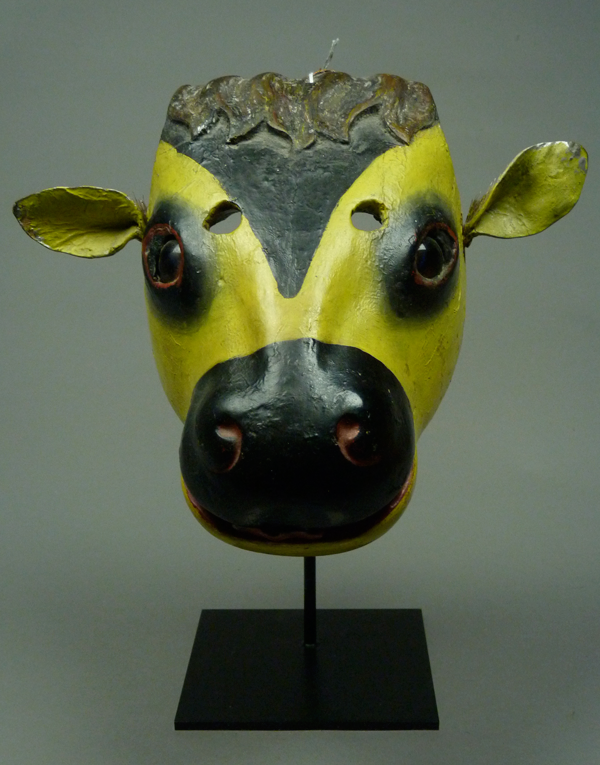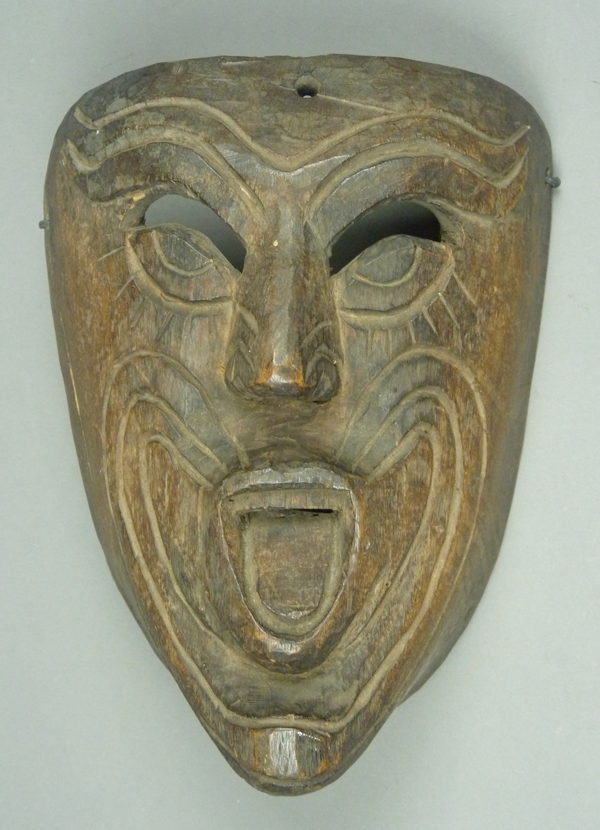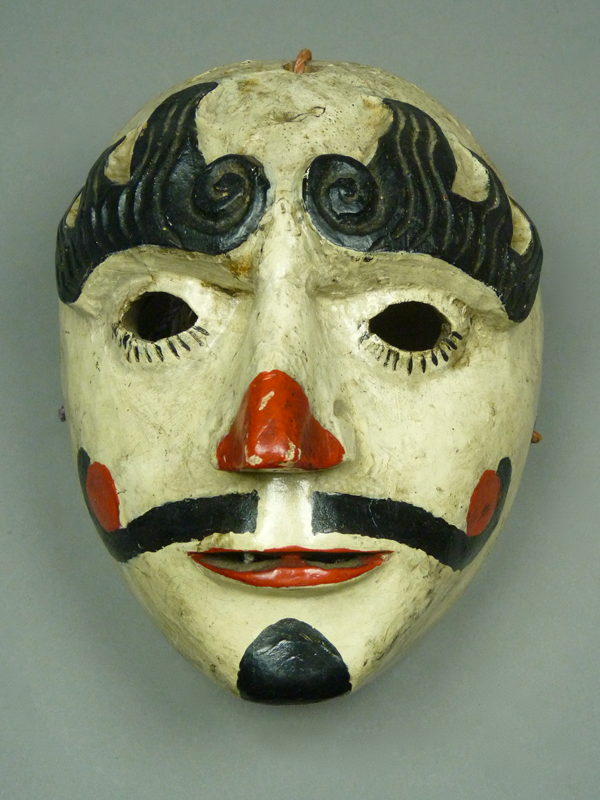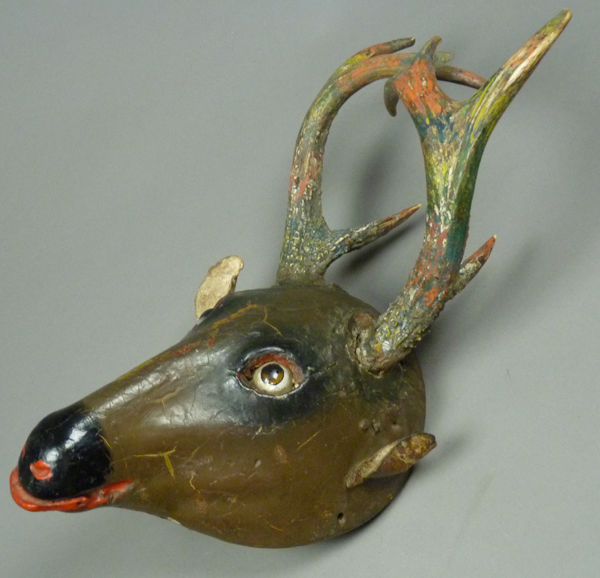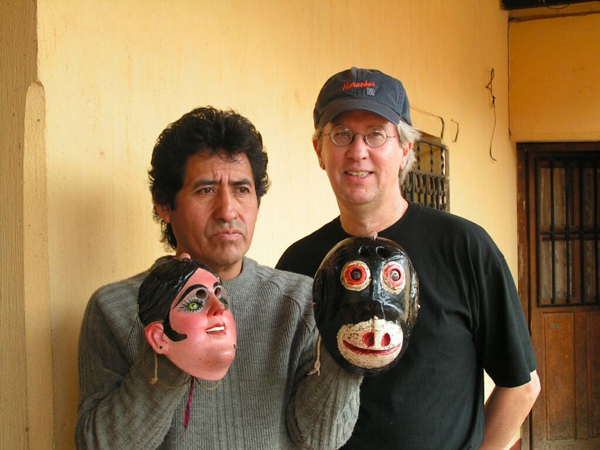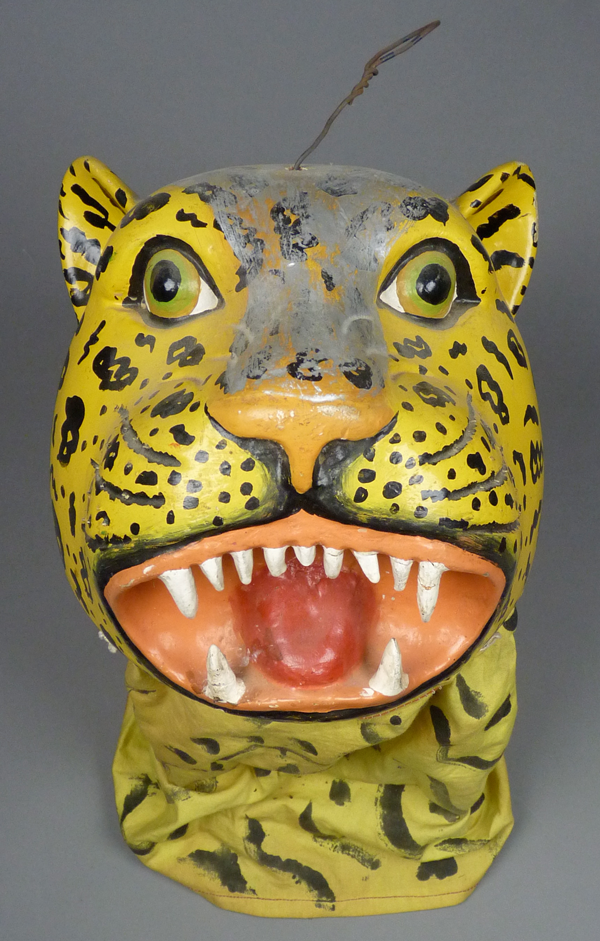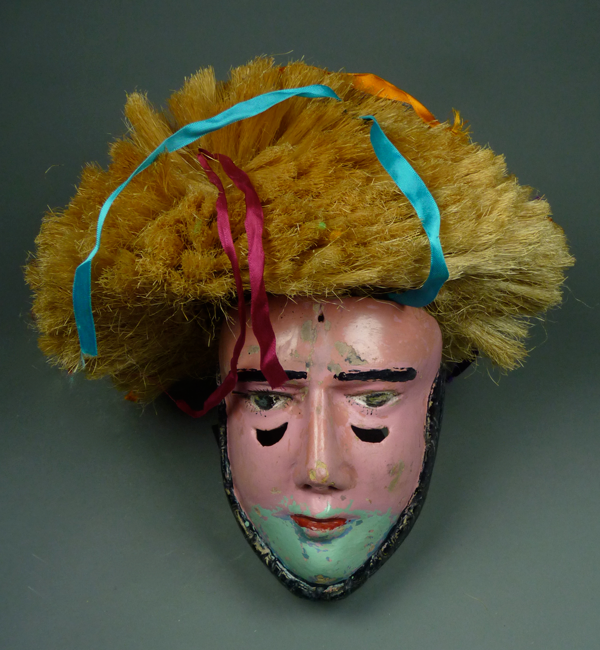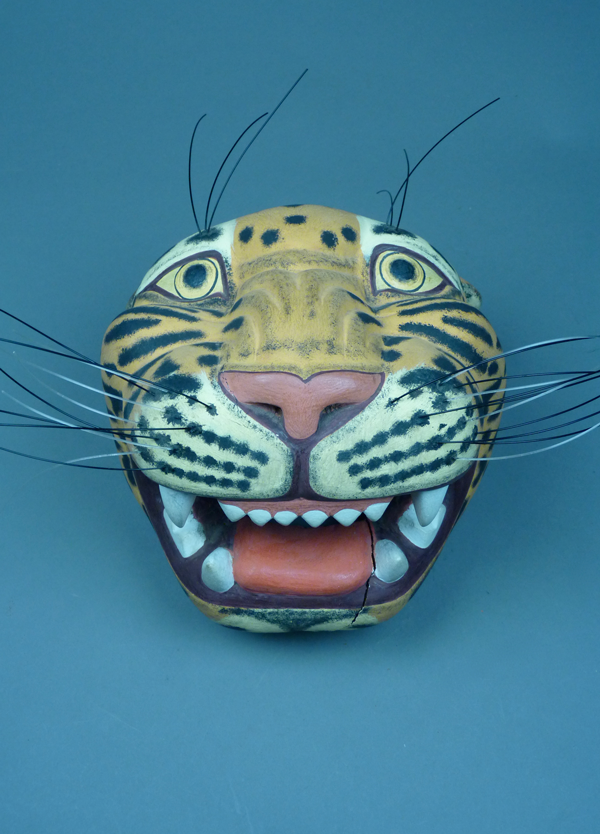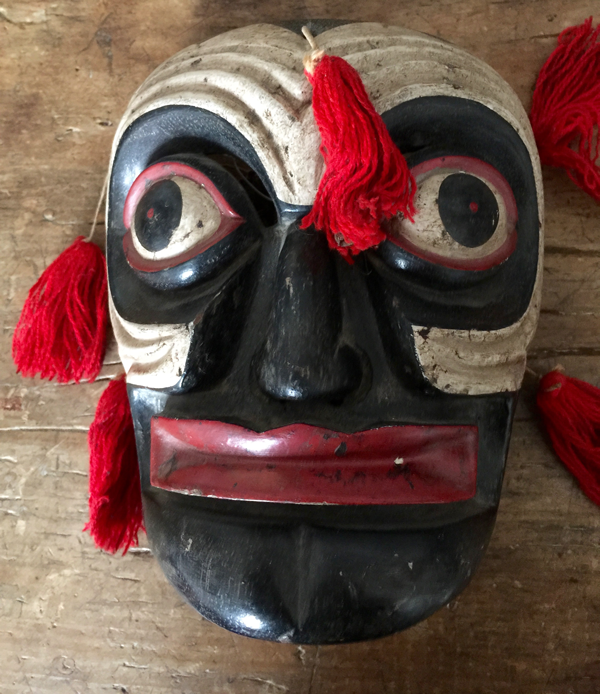As I noted in the last few posts, Guatemala and the Mexican state of Chiapas have some dances and dance characters in common, probably due to their shared history. More broadly, some of the dances of Guatemala are found in many of the Mexican states. These include the dances of the Moros y Cristianos, the Conquest, and dances with characters dressed as Toritos (bulls). In my post about the Patzcar Dance I included one of the small Torito masks that appear in that performance. Today I will feature three larger Bull masks from another Guatemalan dance, El Baile de los Toritos. However, because the masks worn by the human figures in that dance can be interchangeable with the masks used in the Conquest dance, I will talk about the human masks from both of those dances in next weeks post. Here is a Torito mask; it is quite handsome with the relief-carved curls above the eyes.
I obtained this mask from Spencer Throckmorton in 1995.

